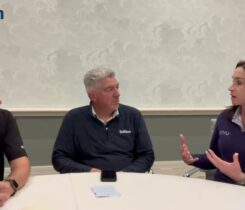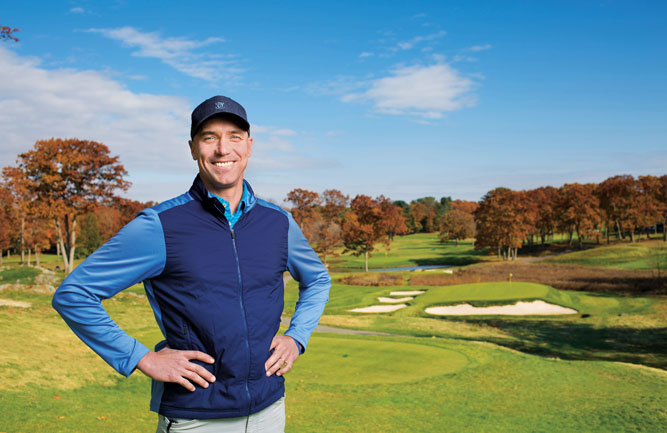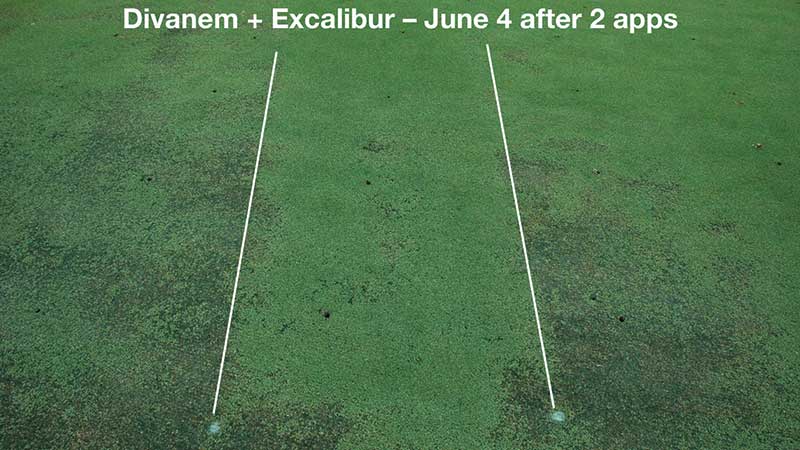My turfgrass wish list

Clark Throssell
In the spirit of Christmas, I am sharing my research wish list. There are great turfgrass scientists hard at work on many of the items on my list. Despite their efforts, some of my wishes remain unfulfilled. That just goes to show how difficult some of these problems are to solve. I recognize the items on my list are not new, but we need to stay focused on the problems faced by the golf industry.
- A consistent and effective control method for bermudagrass. This is a tall order and perhaps not achievable. One hundred percent bermudagrass control is ideal during renovations and re-grassing. This is one instance where 100 percent control is needed, and 95 percent control is not enough. All it takes is a few surviving bermudagrass rhizomes or stolons and a few years of growth, and the new stand is contaminated.
- A less expensive alternative to pine straw areas beneath trees on bermudagrass golf courses. While pine straw mulch looks great, it’s expensive to install and maintain. A shade-tolerant, playable and inexpensive-to-maintain groundcover under trees where bermudagrass won’t survive would be a long-term budget- friendly solution.
- Additional tools to manage nematodes. The turf industry currently is fortunate to have three effective products to control nematodes. So why do I wish for more nematode control products? The industry not too many years ago was reliant on a single nematode control product, and suddenly that product was no longer available. There needs to be a sustained effort to continue to bring new nematode control products to the market.
- Additional annual bluegrass control products. For many golf courses, annual bluegrass remains a serious challenge. While there are effective products and strategies to manage/control annual bluegrass, these products and strategies are not as consistent as we would like from golf course to golf course or year to year. I’m not wishing for a universal annual bluegrass control product — that’s too unrealistic even for me — but it would be great to have a few more annual bluegrass control products and strategies available.
- Better strategies for renovating/re-grassing cool-season turfgrass stands. Turfgrass breeders have developed new cultivars of cool-season species that are much better than the older cultivars now found on many golf courses. The leadership at some golf courses will not consider renovation/re-grassing cool-season grass stands because of the need to close the golf course to complete the renovation/re-grassing. Missing a portion of the golf season and loss of revenue are reasons commonly cited for not being willing to undertake renovation/re-grassing. All renovation/re-grassing procedures need to be challenged and explored. In addition, we need to undertake a study of the long- and short-term benefits and costs involved in renovation/re-grassing and associated golf course closure by those with business expertise in conjunction with turfgrass scientists and superintendents.
- Optimize water use. Managed turfgrass on golf courses needs water. There is a large body of research that provides guidance on how to optimize water applied to turf. Implementation of this research on the irrigation of golf courses has not been embraced to the extent it could be. I’m not sure of the reasons for this, but it would be great for the golf industry to make a major effort to put the available research into practice.
- Fewer trees. The turfgrass scientist and average golfer in me wants fewer trees on golf courses. As a turfgrass scientist, I always consider the needs of the turf first. In any competition between trees and turf, over the long term, the trees win. Hence, fewer trees and better turf in many instances. As an average golfer, too many trees take away any chance of recovery, and recovery shots are one of the really fun and challenging aspects of golf.
What is on your Christmas research wish list? Identifying research needs always is the first place to start when trying to solve a problem












